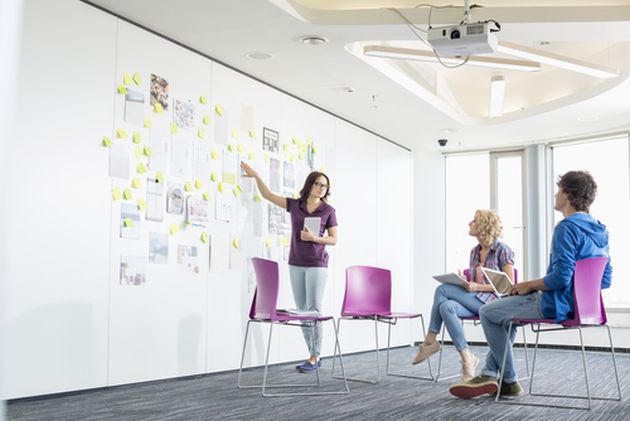
Making an impression – not as easy as it seems
20 March 2017We live in a world of change. Everything is changing fast, yet the one thing that doesn’t seem to be aligned with the pace of that change is the way businesses communicate.
There is certainly an awareness of the need for more effective communication, with training businesses like Mindful Presenter seeing a surge in interest from leaders across all sectors seeking to help their people communicate with impact. Yet the reality of communication practices in the corporate world often reveals a different picture.
When it comes to presenting far too many leaders still seem to operate a “do as I say rather than do as I do” culture.
I don’t know of any leader who is using technology, marketing their business or even developing their people in the same way they were two decades ago yet too many are still presenting exactly the same way they were then.
The challenge
It doesn’t matter how much you spend from your L&D budget to coach people to present more effectively if they return from their training course to find you doing everything they have just spent two days learning not to do:
- Inflicting death by PowerPoint
- Reading slides
- Speaking in a monotone voice
- Making little if any eye contact
- Drowning people in information, data and facts
- Neglecting the audience’s needs
We need a 21st Century cultural makeover which begins with our leaders being coached to lead each time they speak and to connect with people emotionally as well as intellectually.
One of my frustrations from my own experiences within the corporate world was when I heard the CEO or executive say ‘we need to find a way to raise morale’. My concern stemmed from a belief that morale isn’t something you raise, it’s something you pass on through example.
Exceptional communicating and presenting is exactly the same. In other words it’s not something you simply command or expect people to do. You have to show them how first.
The great leaders know exactly how to do that and within that experience there are lessons for cultural developments and shifts for all of us. Here is how as leaders we can begin the process and ensure its success.
- Let them be
I’ve always been extremely fascinated by just how talented and creative most people are and yet when it comes to presenting they are expected to lose their identity and become the ‘corporate spokesperson’.
Being professional doesn’t mean you have to be someone else or deadly serious when you’re presenting to your colleagues or management. People will only be themselves when you are, so show them who you really are and ask for the same.
- Ditch the rules
Many of our delegates tell us that they feel stifled by templates and standard practices; for example the fact that everyone presents in a certain way or they couldn’t possibly stand because everyone else sits. That’s the norm. They tell us that they have to present tonnes of data and talk it through in great detail because that’s what the executives want.
Ditch the rules and let them tell you what you need to know.
- Help them
Tell them exactly what you want and need from them and why. Don’t put them through the sleepless nights and pain of trying to find everything they know on the topic to impress you or not feel caught out. The vast majority of business presentations are far too long and one of the reasons for that is because the presenter doesn’t really know what you want from them, so help them out and tell them.
- Show them
Everyone needs a good mentor, especially when it comes to presenting. Once you are satisfied that as a senior management team you have done all that you can to demonstrate that you can present with impact show your team how to do it too.
Don’t save it for the annual conference or bi-annual Q&A. Get out there regularly and show them how it’s done.
- Create a platform
Imagine a culture where everyone valued their own voice and were encouraged to use it to help others. Create an internal development structure and a process enabling everyone to develop this critical skill and assign mentors to those who would benefit.
Normally it’s the senior management team who get to do most of the talking and when they aren’t they are the ones imposing the pressure on their teams by getting them to present to their seniors and peers.
Create an open speaking platform where people from all departments and all levels can regularly express their ideas and share their initiatives with the rest of the business. Make the objective clear and attractive: to help people to develop their public speaking skills and confidence.
To achieve the level of change required, every organisation needs to hold exceptional communication as part of their vision if they stand any chance of creating a high-impact presentation culture.
